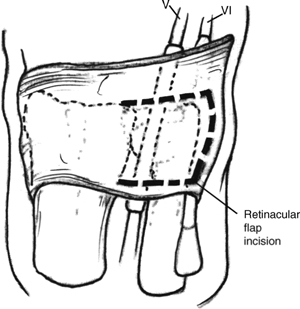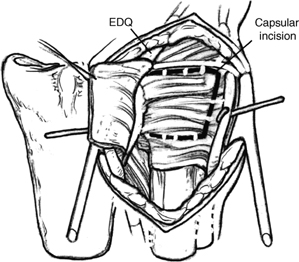21 Darrach Procedure (Distal Ulna Resection) Instability of the ulnar stump may develop resulting in radioulnar impingement. Younger patients may complain of weakness. Ulnar translation of the carpus may occur in rheumatoid patients. Figure 21-1 In the nonrheumatoid patient leave the retinaculum intact distal to the ulnar styloid to help maintain EDQ and extensor carpi ulnaris (ECU) stability.
Indications
Pitfall
Technique

Pearl

Stay updated, free articles. Join our Telegram channel

Full access? Get Clinical Tree








